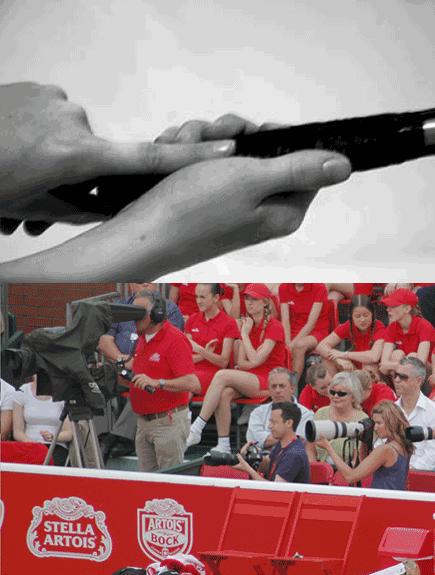
Tennis Elbow
OrthopaedicsandTrauma.com asked Dr John Gaynor of the Artois Championship how he manages tennis elbow in the professionals and amateurs he sees at Queens Club in London?
Tennis elbow is essentially an overuse injury, so it is not an inevitable consequence of the sport.
A few sensible precautions can help to avoid the condition or prevent it coming back. Warm up for your chosen activity with five minutes of stretches and exercise. This allows time for the muscles that cross 2 joints like the extensor muscles for the forearm to adjust to the extra stresses and strains that are being expected of them.
Make sure the grip of your racquet is correct like in the image on the left. The index finger should fit snugly between the thumb and fingers for the perfect grip. Make sure your racquet has a vibration dampner.
However, if symptoms develop, do not improve with the exercises and are still severe after six weeks, a player should see their physiotherapist or GP. Either the GP will treat them or will refer them to a specialist Orthopaedic and Trauma Consultant for treatment.
Conservative treatments include a brace like the Aircast Pneumatic Armband and a short course of NSAID's if indicated. Occasionally, an injection of corticosteroid from the surgeon, as long as it is combined with physiotherapy can be still be useful but the surgeon will take into account previous injections and their effect. Most surgeons will often prescribe an injection of steroid for early relief of symptoms followed by an eight week course of physiotherapy to give a longer term relief of symptoms. Should these methods fail after three attempts over the period of 12 months then surgery can be considered.
For an information sheet on tennis elbow click Orthopaedic & Trauma Surgery and follow the link to a pdf file on tennis elbow.